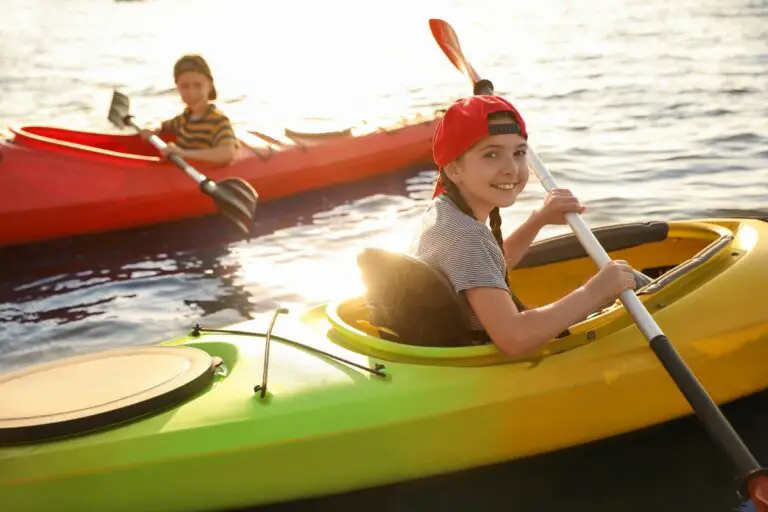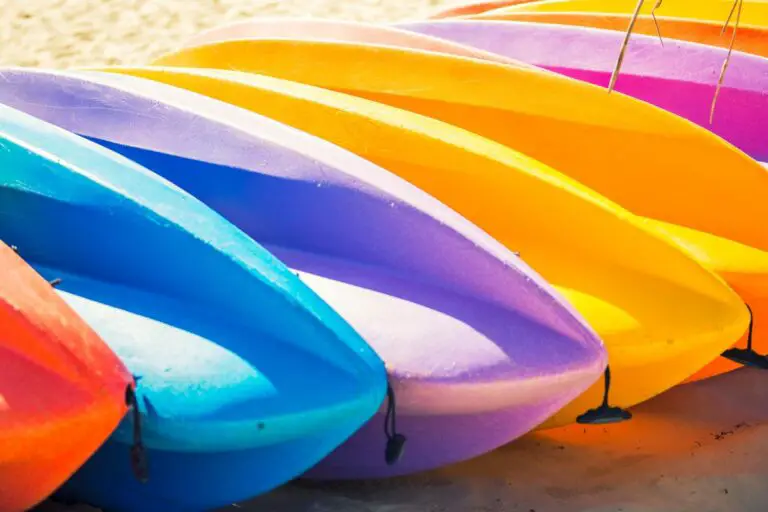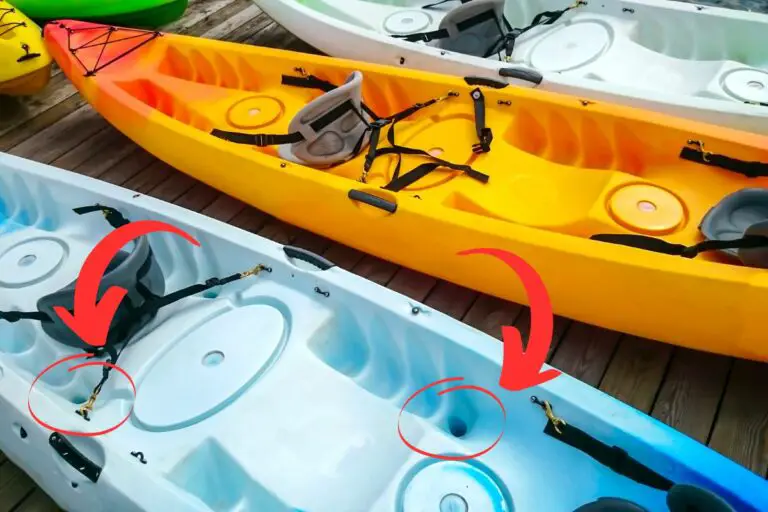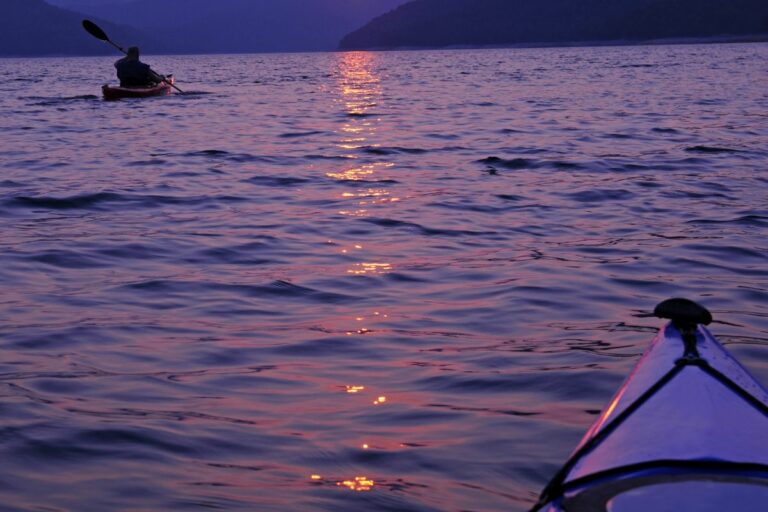What Is the Fastest Kayak Speed? 5 Notable Kayak Speed Records
While many kayakers paddle for leisure and relaxation, some are fascinated by the idea of pushing their physical limits and achieving maximum speed on the water.
So, what is the fastest kayak speed? And can you actually achieve it?
The fastest kayak speed is approximately 20.2 mph. However, average paddlers can kayak at a speed of 3-4 mph. The speed at which you can actually kayak depends on various factors, such as skill level, kayak design, weight onboard, weather and water conditions, and the paddling technique.
Keep reading to learn more about the fastest kayak speed, how fast you can actually kayak, and how to improve your kayaking speed.
Table of Contents
What Is the Fastest Kayak Speed?

The fastest recorded kayak speed is approximately 20.2 miles per hour ( 32.5 kilometers per hour or 17.57 knots). Achieving such a high speed in a kayak requires a combination of factors, including specialized kayak design and efficient paddling technique.
While not all kayakers aim for top speed, even recreational paddlers can get there by selecting a kayak with a design optimized for speed and practicing proper technique.
Is The Maximum Hull Speed the Fastest Possible Speed A Kayak Can Achieve?
The maximum hull speed is the theoretical limit for a kayak’s speed based on its waterline length.
It is not the fastest possible speed a kayak can achieve, as it does not take into account factors such as weather and water condition or the paddler’s skill, which can allow kayaks to exceed this limit.
Therefore, while the maximum hull speed provides a useful guideline for a kayak’s speed potential, it is only theoretical and can be exceeded.
To calculate the maximum hull speed of a kayak, you can use the following formula: 1.34 x square root of waterline length.
You can also use this simple tool to calculate maximum hull speed:
How Fast Can You Actually Kayak?
On average, a recreational kayaker can maintain a speed of around 3-4 miles per hour. However, more skilled kayakers can paddle at faster speeds, with some able to maintain speeds of 5-6 miles per hour or even higher.
The speed at which you can kayak varies depending on various factors, such as your skill level, the design and materials of your kayak, the weight onboard, the water conditions, and your paddling technique.
So, let's talk about these factors in more detail.
- Skill Level: Beginner kayakers may have difficulty maintaining high speeds due to a lack of experience, weak paddling muscles, and poor technique. Experienced kayakers, on the other hand, can maintain higher speeds for longer periods due to their superior technique and conditioning.
- Kayak Design: Kayaks that are longer, narrower, and have streamlined hull shapes and low profiles are generally faster than shorter and wider kayaks because they have less resistance against the water.
- Moreover, kayaks made of lightweight materials such as carbon fiber, Kevlar, or fiberglass are more efficient and require less effort to maintain speed.
- Weight Onboard: The heavier the kayak, the more effort it takes to move it through the water.
- Similarly, the weight of the paddler can also affect the speed of the kayak.
- Weather and Water Conditions: Calm and flat water with little wind resistance can allow kayakers to achieve higher speeds. On the other hand, waves, wind, current, and water temperature can significantly slow down a kayak and make paddling more difficult.
- Paddling Technique: Efficient paddling techniques involve using the entire body, not just the arms, to generate forward momentum. This includes engaging the core muscles, rotating the torso, and using the legs to apply pressure to the footrests or pegs.
By understanding these factors, kayakers can optimize their performance, improve speed, and enjoy an overall more efficient paddling experience.
Tips to Improve Your Kayaking Speed
Improving your kayaking speed takes practice and patience, but here are some tips to help you get started:
- Improve your technique by focusing on using your torso to generate power, maintaining a consistent paddling cadence, and using proper hand placement on the paddle.
- Improve your fitness by incorporating cardio and strength training exercises that target the muscles used in kayaking, such as your arms, shoulders, core, and legs.
- Build your endurance by starting with shorter paddles, then gradually increasing your distance and intensity over time.
- Reduce your weight onboard by packing only the essentials and leaving unnecessary items behind.
- Consider investing in a high-performance kayak that is designed for speed with a narrow and long shape, a low profile, and a streamlined hull. Also, make sure to invest in a lightweight paddle to reduce effort and increase efficiency.
- Check weather and water conditions before you head out, and opt for kayaking in calm waters and minimal wind resistance when possible to help increase your speed.
By focusing on these tips and consistently practicing, you can improve your kayak speed and take your kayaking experience to the next level.
Notable Kayak Speed Records

There are various kayak records achieved by experienced and skilled kayakers. So, if you're looking for a little inspiration to keep you motivated while you work on improving your skills, here are some notable kayak speed records:
- Fastest Solo Kayak Speed: In 2018, Spanish kayaker Antonio De La Rosa set a new world record for the fastest solo kayak speed across the Pacific Ocean, covering 2,500 miles in 76 days, 5 hours, and 25 minutes.
- Fastest Kayak Speed on Flat Water: In 2010, Canadian kayaker Adam van Koeverden set a new world record for the fastest kayak speed on flat water, reaching a speed of 22.19 miles per hour over a 500-meter course.
- Fastest Kayak Speed on Whitewater: In 2015, Czech kayaker Vavra Hradilek set a new world record for the fastest kayak speed on whitewater, reaching a speed of 69.78 miles per hour while descending a section of the Vltava River in the Czech Republic.
These impressive kayak speed records are a testament to the skill, determination, and endurance of kayakers who push the limits of what is possible on the water.
While it may seem nearly impossible to achieve such records, there's nothing stopping you from trying your best. Just remember to always prioritize safety and take measures to prepare for any challenges or unexpected situations that may arise during your attempt.
Kayak your way to Freedom
- On a budget? Check out the best fishing kayaks under $500 here and the best Fishing Kayaks under $1,000 here. Or Check the best Cheap Kayaks here.
- Going fishing? Here are the best Ocean fishing kayaks, and here are the best River Fishing Kayaks.
- You can also find the best Fly Fishing Kayaks here and the best Bass Fishing Boats here.
- A bit experienced? Check out the best modular kayaks here and the best tandem fishing kayaks here.
- Looking for something special? Check out my favorite Ducky kayaks here.
- Navigate your way with these awesome and beginner-friendly Kayak compasses.
- Going Hunting? These Duck hunting kayaks will give you an unfair advantage!
- Have a need for speed? These motorized kayaks will get you moving.
- Protect yourself from the sun with these Kayak shades, and make your kayak more comfortable with these Kayak seats.
- Keep your feet dry and warm with these superb Kayaking shoes.
- Going Kayaking in cold water? Stay warm with these Kayaking gloves.
- Paddle Less, Fish More with the Best Kayak Motors
- Looking to get a trolling motor on your kayak? Check out the best kayak trolling motor mounts here.
If you like this article, please share it or pin it, you can find the share buttons below. We will really appreciate it ❤️







